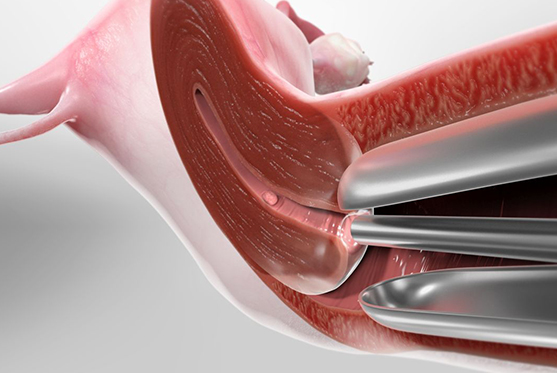
Hysteroscopy is a minimally invasive diagnostic and therapeutic procedure that allows doctors to view the inside of the uterus using a thin, lighted instrument called a hysteroscope. It helps in identifying and treating uterine problems such as fibroids, polyps, adhesions, or abnormal bleeding, thereby improving fertility and overall reproductive health.
This safe and minimally invasive procedure plays a crucial role in diagnosing and treating uterine conditions, improving fertility outcomes.
Modern hysteroscopes with high-definition imaging and miniaturized instruments allow for precise diagnosis and treatment with minimal discomfort and faster recovery.